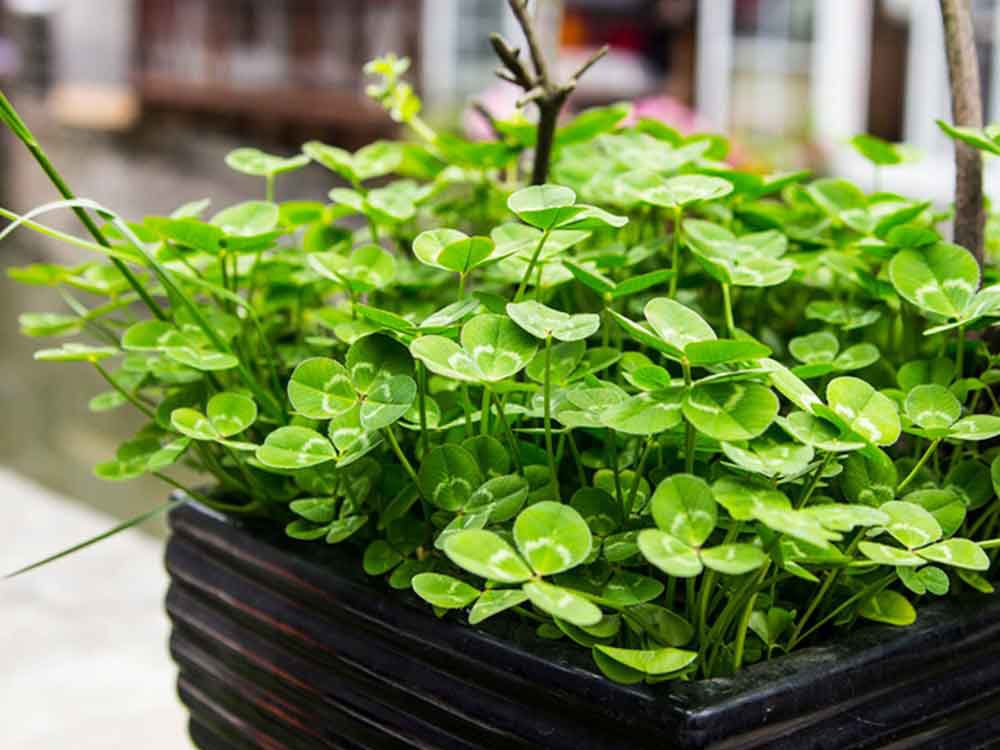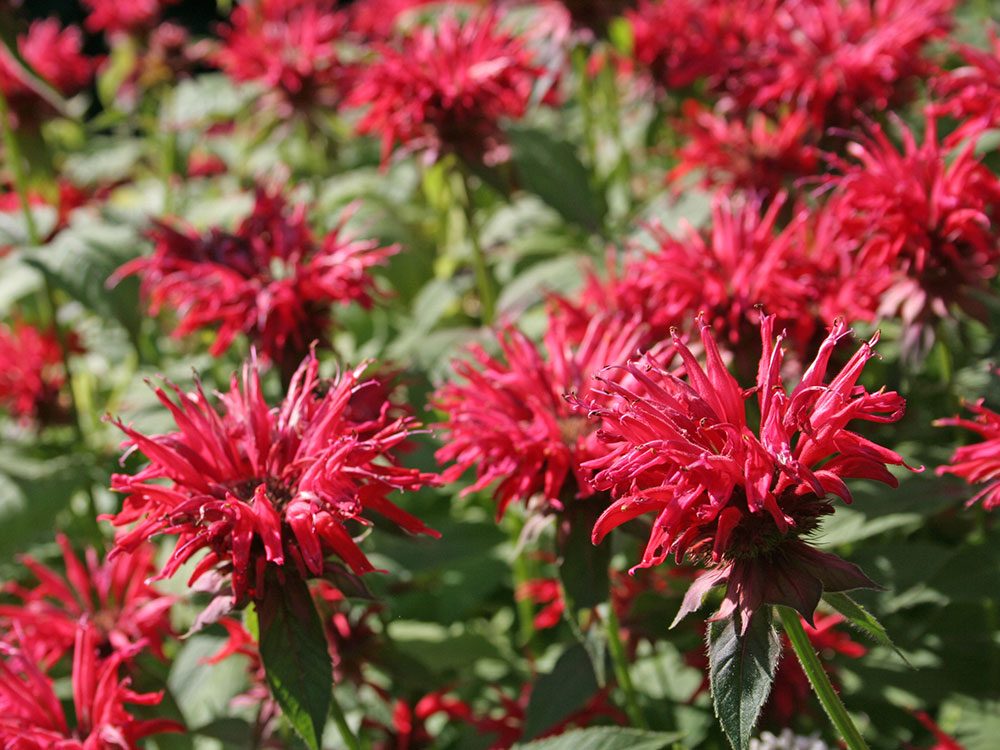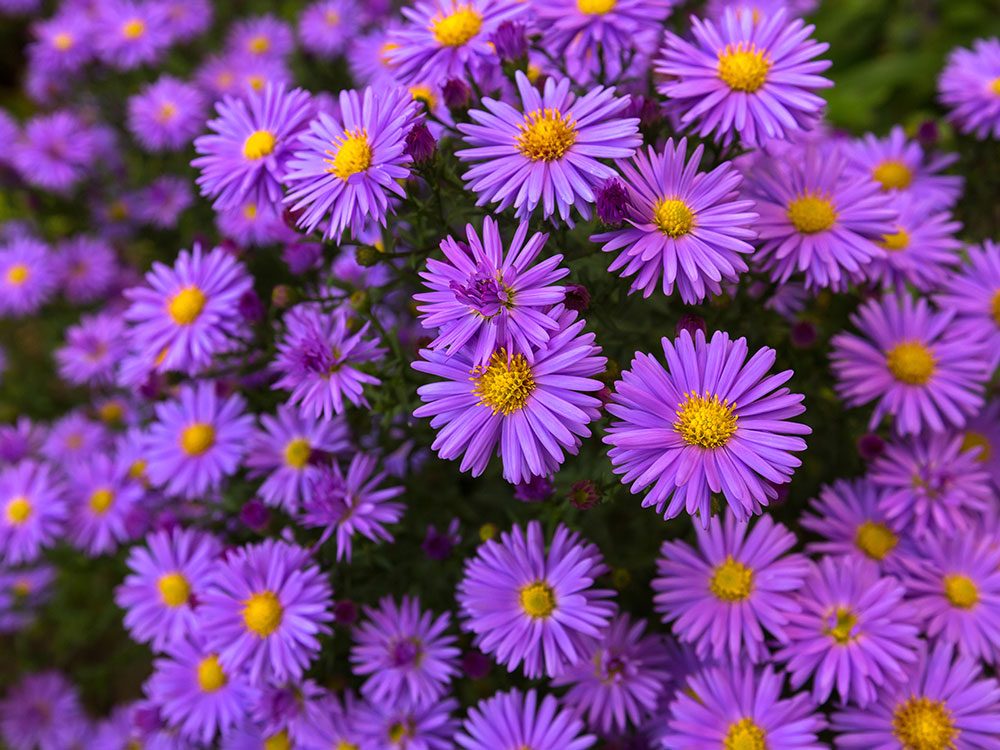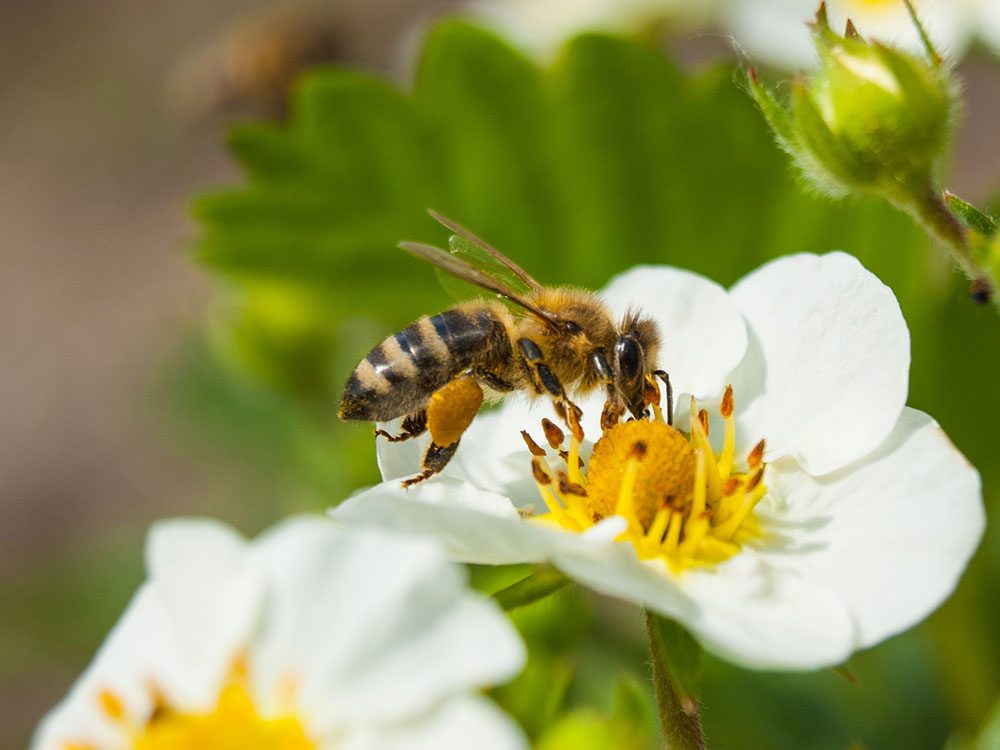
Lavender
When it comes to bee friendly plants, nothing beats lavender. What’s more, lavender is an incredibly versatile plant, ideal for gardens, containers, flowerbeds and anywhere else you want to include it. If you’ve grown lavender outdoors before, you know that it is extremely popular among bees. If you want bigger, bushier lavender plants, then grow it in raised flower beds with good drainage—lavender hates heavy soils that stay wet for long periods of time.
Bees aren’t the only bugs worth rolling out the welcome mat for! Here are more insects you actually want in your garden.

Oregano
As a general rule, common herbs like oregano, sage and basil are very attractive to bees when they flower. Oregano is best grown in a pot, where it is easy to control and harvest. Otherwise it can take over a flowerbed and grow into more of a problem than a useful herb. Keep it in well-drained soil and do not overwater. Check out these helpful hints for growing common herbs from gardening expert Carson Arthur.

Lilacs
Beautiful, fragrant lilacs are always a good idea if you have the space—and it’s not hard to see why bees love them. Lilacs love well-drained soils and the sun, and they grow into large bushes over time, so leave plenty of space for these bee friendly plants to grow when starting your garden.
No room for full garden beds? No problem! These 17 urban gardening tips are perfect for small spaces.

Clover
We’re not talking about the clover that’s taking over your lawn; we’re talking about a larger flowering variety that is far more at home in your garden. While you may have to protect it from hungry creatures, bees will love it. Just remember to plant it more like grass and treat it like a ground cover (please don’t step on bees though) as an alternative to a lawn.
Speaking of ground cover, don’t miss these organic lawn care tips.

Honeysuckle
Honeysuckle needs no introduction: Famed for its scent and exotic, orchid-like flowers, honeysuckle is an amazing addition to any garden. They come in bush or climber form based on the variety, which gives you a lot of options for placement (growing them around patios or decks is common for the fragrance). Like lilacs, honeysuckles can grow surprisingly large after a couple of years, so take note of space.
These gardening shortcuts will save you both time and money.

Sedum
For a swath of rich colour in a flowerbed, nothing works quite like sedum—and it’s a very common target for bees looking for a rich source of pollen. Plant seeds well apart and give them space to grow together over time.
Want to grow your own natural medicine cabinet? Here are eight medicinal plants you can grow at home.

Hyacinth
Looking for something a little more bold and beautiful? Hyacinth is popular among bee species and is a great way to build up a flower bed worthy of showing off. Additionally, hyacinth plants are quite adaptable in terms of where they can grow, as long as the soil is well-drained. Plant these bulbs in autumn for best results.
Here are 24 genius gardening hacks you’ll be glad you know.

Bee Balm, Monarda
As the name implies, bees love the bee balm plant, and this spiky flower can provide some important exotic flavour to your yard. Unlike many of the plants on our list, the bee balm doesn’t mind wet soil and more marshy ground, making it more flexible when it comes to planting in clay or tougher soils.
Don’t miss these tips for attracting butterflies to your garden.

Aster
Aster can be planted in spring, doesn’t mind cool air and quickly grows into a bright and beautiful flower. These plants work best in a pot or similar confined space, which also helps when these bee friendly plants start to droop a little.
If you’re planning a lot of pots, you’ll also want to check out the best annuals for containers.

Berries
Blueberries, strawberries, raspberries… If you like growing berries in your yard, keep in mind that as long as they flower, the bees will like them, too. Note that not all varieties of berries will produce edible berries, especially in the first year of growth, so plan appropriately if you have your eye on the food aspect.
Next, learn 25 simple landscaping ideas for the perfect garden.